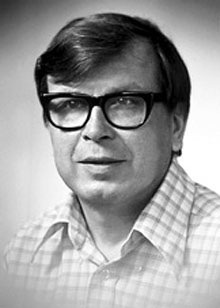 Bacteriologist Russian who worked in India.
Bacteriologist Russian who worked in India. During his career he developed a number of promising vaccines and successful procedures: Haffkine vaccine (a broth culture, old and barren of Yersinia pestis ), a cholera vaccine (with a live, attenuated strain of Vibrio cholerae , also known as the vaccine Ferrán-Haffkine ), an anti-plague serum, the haffkinina (a preparation of atebrin) and haffkinización (a unique procedure of immunization with anti-plague serum.)
of all this remains only the memory of its vaccine against bubonic plague, the first used in humans and whose principle is the one currently in use, is far from being a marvel. At the crossroads, Haffkine took the beaten track of his time, working with whole bacteria, dead or attenuated virulence, and failed against cholera (which is a disease caused by toxins), and failed in part before the plague (because the procedures of the time was not allowed to select the correct antigen).
In a happy moment of his life, Waldemar Mordecai enjoyed great prestige and came to lead a vaccine laboratory in Bombay. Unfortunately, not personal guilt, the two vaccines were involved in fatal accidents, causing the unfortunate researcher years of bitter disappointments:
- The first occurred in November 1902 during a major vaccine against bubonic plague in the Punjab , where 19 people had been immunized Mulkowal the people died of tetanus. The cause of this unfortunate accident, known as the Mulkowal disaster remained in dispute for four years, but finally seemed Haffkine prove innocence, it was for four centuries of anguish.
- The second began on December 16, 1906, hearing in the press that Dr. Richard Strong was inoculated Bilibid Prison in Manila, 24 "volunteers" with a live cholera vaccine prepared using the procedure Haffkine , following which 13 of them had died. What is truly amazing this new disaster is that the prisoners did not die of cholera, but ... Bubonic plague! (Due to an error during the preparation of the vaccine.)
Unfortunately, Waldemar Haffkine was not fully restored by the events in which he was not at fault, to the point that the famous researcher was suspended for any cholera inoculation in India.
work Author: Senabre Garcia, Cristina.









